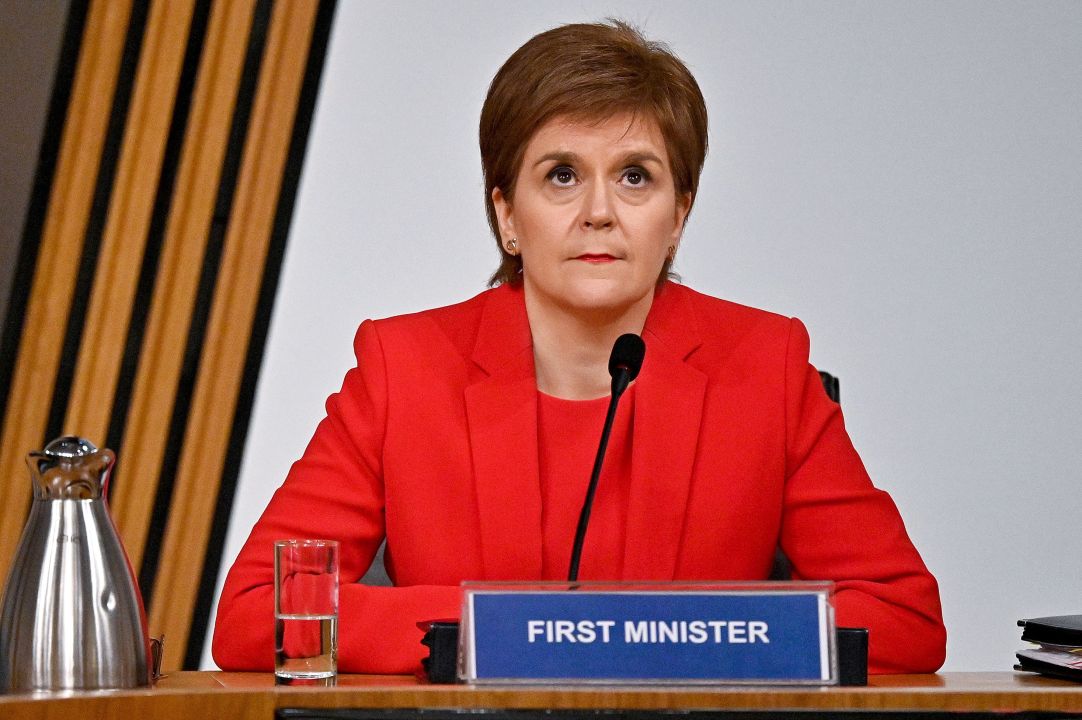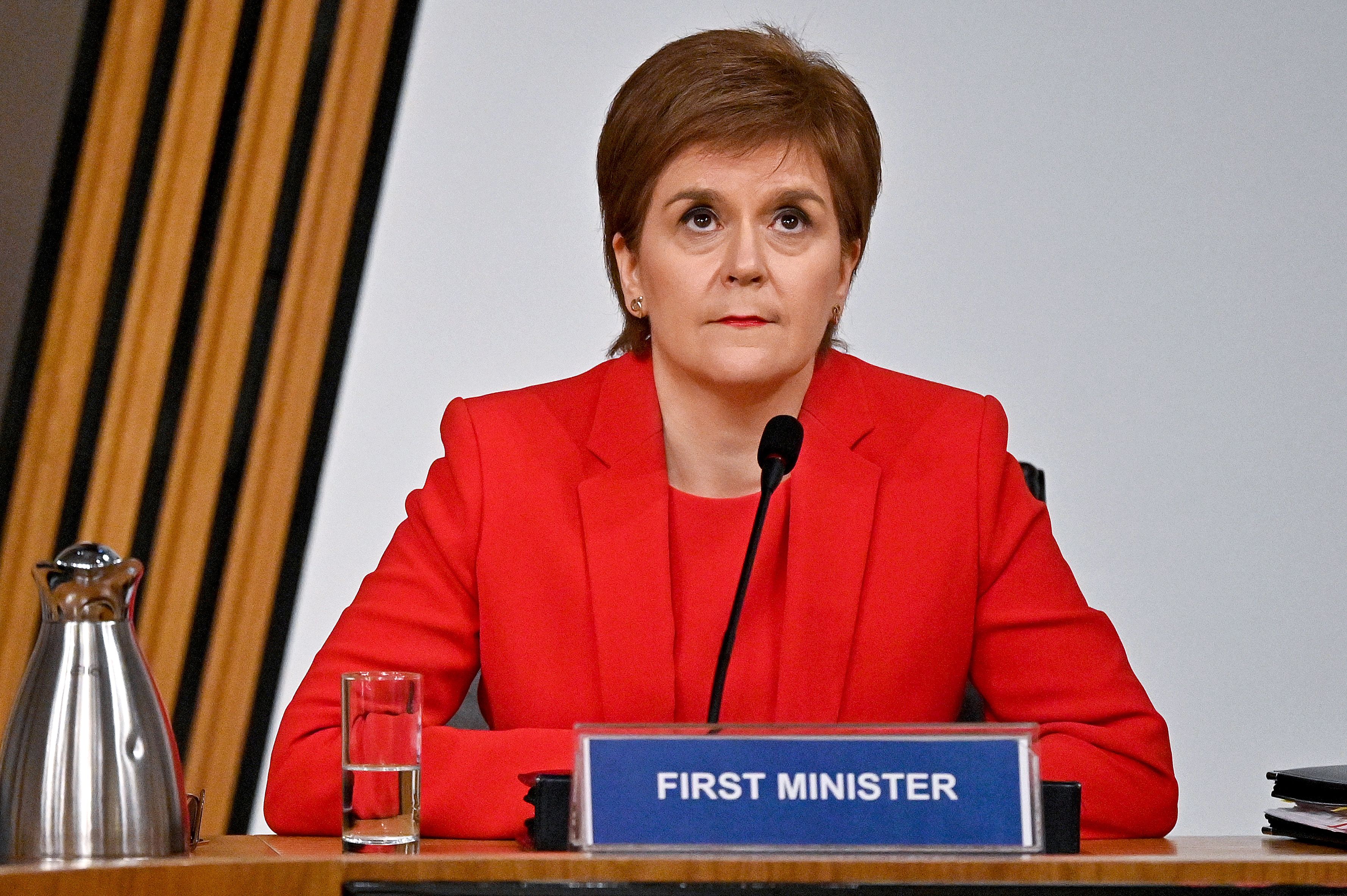There have been inquiries, committees, multiple court cases and conflicting reports — the Salmond affair is as slippery as it is fishy. But the fundamental question is this: was there a conspiracy to take down Alex Salmond?
Having been acquitted of 13 counts of sexual assault last year, the former first minister has alleged that there was a conspiracy — and that his protégé Nicola Sturgeon was involved. Last week he told the Holyrood inquiry that Sturgeon and her husband, SNP chief executive Peter Murrell, led a ‘malicious and concerted effort’ to remove their political rival and even have him imprisoned.
Now Sturgeon has given her side of events. Here are the key moments from her evidence to the inquiry:
The conspiracy
Unsurprisingly, Sturgeon insisted that there had been no conspiracy against the former first minister, saying: ‘I feel I must rebut the absurd suggestion that anyone acted with malice or as part of a plot against Alex Salmond.’ Instead, she said, she had merely done what was expected of her in refusing to follow ‘the age-old pattern of allowing a powerful man to use his status and connections to get what he wants.’
Sturgeon said she would have ‘bitten your hand off’ to avoid the Salmond allegations becoming public, instead preferring that they were resolved in private. She told the committee: ‘I never wanted to be publicly commenting on allegations of this nature against Alex Salmond,’ adding that the notion of a public investigation ‘horrified’ her and made her feel ‘physically sick’.
‘To this day, I don’t know the identity of every single complainer in the criminal trial… The idea that this was some concoction or plot is just not based in any semblance of fact or any basis of credible evidence.’ The First Minister went further, insisting that she refused to become involved even after Salmond asked her to help him: ‘I believe it was right that I did not intervene in the investigation when I became aware of it, even though Alex Salmond asked me to do so.’
She said that even though Salmond had been acquitted by a criminal court, she knew from her own discussions with him that ‘his behaviour was not always appropriate’.
Withholding evidence
During his evidence last week, Salmond suggested that he was the only witness to be called by the committee that actually wanted to get to the truth. MSPs too have expressed frustration that the Scottish government refused to release key documents, including legal advice on Salmond’s judicial review into their investigation (more on that below). The Scottish government is now releasing that advice, but only after two Holyrood votes and an agreement by all opposition parties that they would pass a no confidence vote in Sturgeon’s deputy should he fail to publish those documents. During his evidence, Salmond suggested the Holyrood inquiry had been ‘neutered’ by an SNP establishment that was closing ranks to protect one of their own.
Sturgeon denied her government was blocking the release of key evidence, telling MSPs: ‘There’s no intention on the part of the government to withhold relevant information from the committee… While the government has made mistakes, there’s nothing here that the government has to hide.’ Which brings us on to the next point…
‘A very serious mistake’
This one takes a little unpacking. Prior to his acquittal in March 2020, Salmond launched a legal challenge into the way the Scottish government had handled the allegations against him. That judicial review sided with Salmond, with the court ruling that elements of the Scottish government’s investigation had been ‘unlawful’ and ‘tainted by apparent bias’. He was subsequently awarded £512,250 in legal fees to cover the cost of the case.
Salmond claimed that the Scottish government knew that they were going to lose the case but continued with it regardless. Evidence released to the committee on Tuesday seems to corroborate that claim — that the Scottish government continued to fight Salmond even after they were warned by lawyers that they were ‘defending the indefensible’.
Sturgeon attempted to limit the scope of her government’s failings, saying that ‘in the appointment of the investigating officer, a mistake was made. The investigating officer had had prior contact with those who made the complaints.’
This may sound like a minor point, but the issue rests on the fact that the investigator had spoken to the complainers prior to the investigation’s official launch — this is where the court found that the investigation had been ‘tainted by apparent bias’. The lawyers instructed by the Scottish government expressed ‘extreme professional embarrassment’ at the faulty case they had been asked to bring.
The fact that the government’s lawyers were unequivocal in their criticism of their own case has given rise to the suggestion that it was pursued for political reasons. Asked whether the case was continued to damage her predecessor, Sturgeon replied: ‘Absolutely, emphatically not… I would never have wanted to get Alex Salmond.’ She said the lawyers’ view of the case at the beginning of the process had been ‘at the more optimistic end’ of the scale.
‘The charge that has been made against me is that I willfully allowed a judicial review to proceed against the legal advice and therefore I broke the ministerial code. With respect, as you now know, I was acting in accordance with the views of the law officers.’
Disclosure of identity
Giving evidence last week, Salmond told the inquiry that the identity of a complainer had been passed to his former chief of staff Geoff Aberdein and that three different people could corroborate that event. Throughout this inquiry, Sturgeon has suggested that her inability to be completely transparent was based only on the fact that she had to protect the identity of those women who brought accusations against Salmond. If she had authorised the disclosure of one of the complainer’s identities then this ‘egregious breach of privacy’ would undermine one of her central arguments.
Instead, Sturgeon maintained that Salmond was already aware of the complainers’ identities when he first told her about the allegations against him. She told MSPs: ‘Mr Salmond knew the identity of both complainers, in one case because he told me he had apologised to her… and the other because he had done his own investigation to find out.’
She continued: ‘It would be serious if the identity of a complainer was revealed but that’s not what I understand happened in the way that’s being set out… Clearly there are differing recollections and differing accounts.’
Changing the rules
Sturgeon denied that her government had changed the harassment complaints procedure to damage her predecessor. During his evidence, Salmond suggested the rules had been changed around the time of the first allegations against him so that former ministers could also be subject to the new updated harassment rules.
Sturgeon instead pointed to the global #MeToo movement as the impetus both for the change in policy and the surfacing of the allegations against Salmond. She told the committee ‘That’s obviously one of the suggestions that has been made, that this policy was somehow a bespoke Alex Salmond policy… but it wasn’t. Even in the days we were besties, Alex Salmond had a tendency to see most things as about him.’








Comments